The world of coffee is rich and diverse, offering a myriad of flavors, brewing methods, and traditions that span across continents. Among the many coffee drinks that have captured the hearts of enthusiasts and casual drinkers alike, the Lungo holds a unique place. This introductory segment explores the Lungo, tracing its origins, and positioning it within the broader context of coffee culture.
What is a Lungo?
A Lungo is an espresso-based coffee drink made by pulling a longer shot, resulting in a larger, slightly milder beverage compared to the more concentrated espresso. This process extracts more flavors and compounds, often leading to a more bitter taste due to the extended extraction time. It is a popular choice for those seeking the depth of espresso in a less intense form, typically yielding about 110 to 120 ml of coffee.
Overview of the Lungo
A Lungo is often mistaken for a mere extension of an espresso, yet it stands out with its distinct characteristics. It’s made by forcing hot water through finely-ground coffee beans, similar to an espresso, but the quantity of water used is about double. This process results in a longer (lungo in Italian means “long”) and somewhat less intense version of an espresso. The Lungo balances the rich flavors of espresso with a lighter body, making it a favorite among those who prefer a milder yet flavorful coffee experience.
Origins and History
The Lungo has its roots in the Italian coffee tradition, which is known for its strict definitions of how coffee should be prepared and enjoyed. The exact origin of the Lungo is difficult to pinpoint, as it likely evolved alongside the espresso in the early 20th century when espresso machines became widespread in Italy. Its creation was driven by the desire for a longer coffee drink that retained the essence and depth of an espresso but offered a different experience in terms of taste and volume.
How Lungo Fits into the Coffee Culture
Lungo occupies a special place in the global coffee culture. It embodies the Italian coffee tradition’s emphasis on quality and precision, while also offering flexibility to cater to individual preferences. In coffee cultures around the world, the Lungo serves as a bridge between the intense espresso and the more diluted Americano. It appeals to a wide range of coffee drinkers, from those seeking a quick caffeine fix without the overpowering strength of an espresso to aficionados looking to explore the nuances of coffee flavors in a longer format. The Lungo’s adaptability has also made it a canvas for innovation, with variations and serving methods that reflect local tastes and traditions.
The Lungo’s journey from an Italian innovation to a staple in coffee menus worldwide illustrates the dynamic nature of coffee culture. It showcases how traditions can evolve and adapt, giving rise to new experiences that resonate with diverse groups of people. As we delve deeper into the Lungo’s characteristics, preparation, and variations, we gain a greater appreciation for this distinctive coffee drink and its role in the global tapestry of coffee.
Understanding the Basics of Lungo
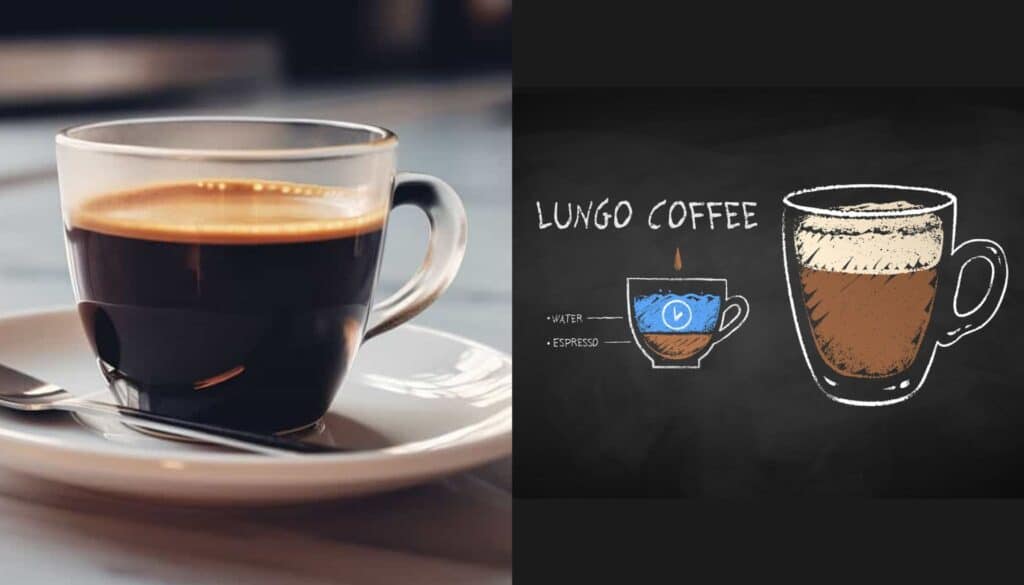
Diving into the world of coffee, one finds a variety of brewing styles, each with its unique characteristics and appeal. The Lungo, a distinctive member of the coffee family, offers an interesting middle ground between the intense espresso and the lighter Americano. This section breaks down the basics of what a Lungo is, compares it to its coffee counterparts, and explores the significance of its name.
Definition of a Lungo
A Lungo is a coffee beverage made by passing a longer stream of hot water through finely-ground coffee beans using an espresso machine. The process typically involves using about twice the amount of water used for an espresso, resulting in a larger volume coffee that takes about twice as long to pull. Despite the increased water volume, the Lungo still retains much of the depth and flavor intensity of an espresso, albeit with a slightly milder and less concentrated taste. The result is a balanced, aromatic coffee that offers a different kind of satisfaction compared to its espresso counterpart.
Comparison with Espresso and Americano
- Espresso: The cornerstone of many coffee drinks, an espresso is known for its concentrated flavor, rich aroma, and creamy body. It’s made by forcing a small amount of nearly boiling water through finely-ground coffee. The Lungo extends the espresso’s brewing time and water volume, leading to a less intense but more voluminous drink.
- Americano: An Americano is made by adding hot water to an espresso shot, diluting its strength but preserving its flavor. Unlike the Lungo, where extra water is passed through the coffee grounds, the Americano’s additional water is added after the espresso shot is pulled. This results in a drink that is lighter in flavor and body compared to a Lungo.
The Significance of the Name “Lungo”
The term “Lungo” comes from the Italian word for “long,” referring not just to the brewing time but also to the volume of the coffee. This name perfectly encapsulates the essence of the drink—a longer espresso that allows coffee lovers to enjoy the depth and richness of espresso in a larger cup. The significance of the name lies in its promise of an extended coffee experience, offering a lingering taste and aroma that espresso aficionados can savor. The Lungo, thus, stands as a testament to the adaptability and variety within coffee culture, offering a unique twist on traditional espresso that caters to diverse preferences and drinking occasions.
The Preparation of Lungo
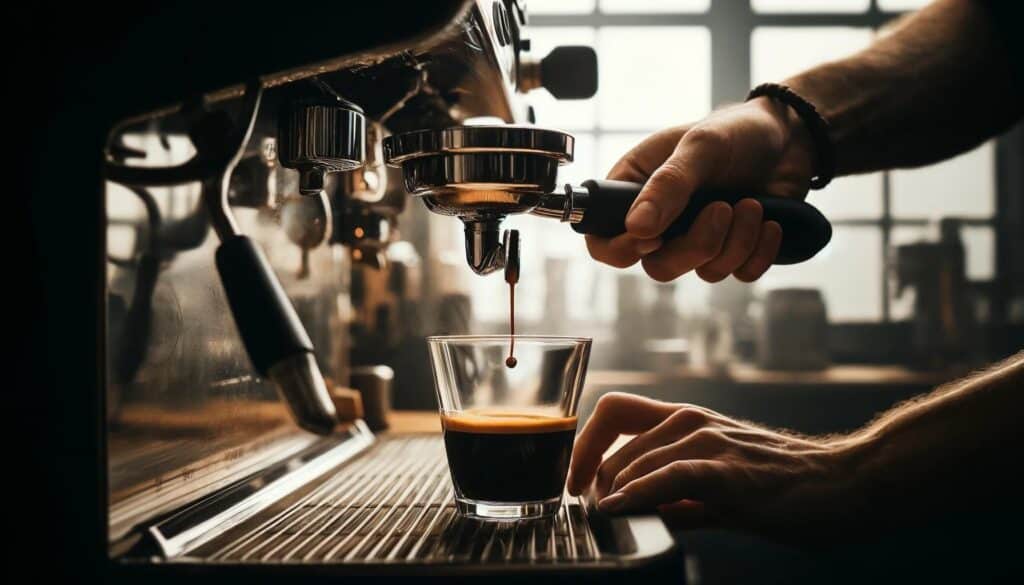
The art of crafting the perfect Lungo lies in understanding its unique preparation process, which distinguishes it from other coffee types. This section delves into the specifics of Lungo preparation, including the differences in preparation techniques, the selection of coffee beans and grind size, the critical role of water, and the precise brewing time and temperature required to achieve the quintessential Lungo.
Key Differences in Preparation Compared to Other Coffee Types
- Water Volume and Contact Time: The most notable difference in preparing a Lungo compared to an espresso or Americano is the volume of water used and the contact time between the water and coffee grounds. While an espresso typically uses about 30 ml of water, a Lungo uses approximately 60 ml or more, with a longer extraction time. This contrasts with an Americano, where water is added to the espresso after extraction.
- Pressure: Despite the increased water volume, the pressure used in brewing a Lungo is similar to that of an espresso, ensuring that the coffee is extracted thoroughly but not over-extracted.
Ideal Coffee Beans and Grind Size for Lungo
- Coffee Beans: The choice of beans for a Lungo can vary according to personal preference. However, medium to dark roast beans are often preferred for their ability to produce a rich and balanced flavor when more water is used. Beans with a robust flavor profile that can withstand longer extraction times without becoming bitter are ideal.
- Grind Size: The grind size for a Lungo should be slightly coarser than that used for an espresso. This adjustment helps to prevent over-extraction and bitterness due to the longer water contact time. A grind that is too fine could result in a brew that is too bitter, while a grind that is too coarse might produce a weak Lungo.
The Role of Water and Its Quantity
Water plays a pivotal role in the preparation of a Lungo. Not only does the quantity of water distinguish it from an espresso, but the quality of the water can also significantly impact the taste. The ideal quantity for a Lungo is about double that of an espresso, generally around 60 to 120 ml, depending on preference. Using filtered water at the right temperature can enhance the extraction process, ensuring that the flavors are fully developed without introducing unwanted tastes.
Brewing Time and Temperature
- Brewing Time: The brewing time for a Lungo is typically between 40 to 60 seconds, which is longer than the 20 to 30 seconds usually recommended for an espresso. This extended time allows the larger volume of water to pass through the coffee grounds, extracting more flavor but requiring careful control to avoid bitterness.
- Temperature: The ideal water temperature for brewing a Lungo is between 90 to 96 degrees Celsius (194 to 204 degrees Fahrenheit), similar to that of an espresso. This range is critical for optimal extraction, enabling the water to extract flavor compounds efficiently without scalding the coffee.
Mastering the preparation of a Lungo involves a delicate balance of these elements, culminating in a coffee experience that is both enriching and enjoyable. With the right technique, coffee aficionados can savor the nuanced flavors and aromas that make the Lungo a cherished part of coffee culture.
The Art and Science of Lungo

Creating the perfect Lungo is a fascinating interplay between art and science, requiring a deep understanding of the extraction process, the impact of pressure on taste, and the ability to adjust various brewing variables. This intricate process highlights the complexity behind what might seem like a simple coffee drink, revealing the nuanced adjustments necessary to achieve the ideal Lungo.
The Importance of the Extraction Process
Extraction is the heart of coffee brewing, a process where water dissolves and pulls flavors from the coffee grounds. In the context of Lungo, extraction becomes even more critical due to the increased water volume and longer contact time. The goal is to extract the right balance of flavors, acids, and oils from the beans. Too little extraction results in a sour, underwhelming coffee, lacking depth and complexity. Over-extraction, on the other hand, leads to a bitter, astringent taste as undesirable compounds are pulled from the grounds. Achieving the perfect Lungo requires a precise control of extraction, aiming for a balance that brings out the coffee’s rich flavors without tipping into bitterness.
How Pressure Affects the Taste
Pressure is a crucial variable in espresso-based drinks, including the Lungo. Typically, espresso machines use 9 bars of pressure to force hot water through the compacted coffee grounds. This high-pressure extraction is essential for creating the Lungo’s signature flavor profile and crema on top of the drink. The pressure influences the speed at which water passes through the grounds, affecting the extraction rate of different flavor compounds. A consistent, high pressure ensures that the extraction is efficient and balanced, allowing for the full spectrum of flavors and aromas to be extracted quickly before bitterness sets in. Understanding and controlling this pressure is key to mastering the Lungo, as it directly impacts the taste and quality of the final product.
Adjusting Variables for the Perfect Lungo
Brewing the perfect Lungo is an exercise in precision, requiring adjustments to several variables:
- Grind Size: Slightly coarser than espresso to accommodate the longer extraction time without becoming bitter.
- Dosage: The amount of coffee used can be tweaked to influence the strength and flavor intensity of the Lungo. A standard Lungo might use the same coffee dose as an espresso, but variations can be made to suit taste preferences.
- Water Volume and Temperature: Essential for controlling the extraction process. More water extends the brewing time, necessitating a careful balance to avoid over-extraction. The ideal temperature range (90 to 96°C or 194 to 204°F) ensures optimal extraction without degrading the coffee’s flavor.
- Pressure: Maintaining the correct pressure is crucial for achieving the desired extraction rate and developing a rich crema.
Experimenting with these variables allows baristas and home brewers alike to tailor their Lungo to personal or customer preferences, making each cup a unique experience. The quest for the perfect Lungo is a testament to the craft of coffee making, blending scientific precision with artistic expression to create a drink that is both a pleasure to make and to enjoy.
Lungo Variations

The Lungo, with its versatile nature, has inspired a range of variations around the world, catering to diverse palates and preferences. These variations are not just about adjusting the water volume or brewing time; they often incorporate unique ingredients or brewing techniques to create something distinctively new. Here, we explore some of the popular Lungo variations globally, offer DIY Lungo recipes for home experimentation, and highlight specialty Lungo offerings that can be found in cafes.
Popular Lungo Variations Around the World
- Caffè Crema: Popular in Switzerland and northern Italy, Caffè Crema is a long espresso that predates the Lungo. It’s similar in volume but brewed at a slightly lower pressure, resulting in a smoother, creamier texture with a subtle flavor profile.
- Long Black: A favorite in Australia and New Zealand, the Long Black is prepared by pouring hot water into the cup followed by two shots of espresso. It’s similar to an Americano but starts with water instead of espresso, preserving the crema and offering a stronger aroma.
- Red Eye: A powerful drink from the United States that combines a traditional cup of drip coffee with a shot of espresso. When a Lungo is used instead of a regular espresso shot, it creates a milder but still highly caffeinated beverage.
DIY Lungo Recipes at Home
Crafting a Lungo at home allows for personalization and experimentation. Here are a couple of DIY Lungo recipes to try:
- Vanilla Lungo: Brew a standard Lungo and add a teaspoon of vanilla extract or a vanilla pod to the cup before brewing. The vanilla complements the Lungo’s natural flavors, adding a sweet and aromatic twist.
- Iced Lungo: Perfect for hot days, prepare a Lungo and let it cool slightly. Pour over a glass filled with ice cubes, and add a touch of milk or a sweetener like honey or agave syrup for a refreshing beverage.
Specialty Lungo Offerings in Cafes
Many cafes now offer specialty Lungo variations that showcase the creativity and skill of their baristas. Some examples include:
- Lungo Macchiato: A twist on the traditional Macchiato, this version uses a Lungo as the base. A small amount of frothed milk is spooned over the top, adding a creamy texture and slightly sweet flavor that contrasts beautifully with the Lungo’s intensity.
- Spiced Lungo: Some cafes infuse the Lungo with spices such as cinnamon, cardamom, or nutmeg during brewing, introducing a warm, spicy element that enhances the coffee’s natural flavors.
These Lungo variations reflect the adaptability and global appeal of this coffee style. Whether through adding flavors, experimenting with brewing techniques, or combining it with other coffee types, the Lungo continues to inspire creativity and enjoyment. The diversity of Lungo offerings, from home-brewed experiments to specialty cafe creations, highlights the endless possibilities within the world of coffee, inviting coffee lovers to explore and find their perfect cup.
Equipment for Making Lungo

Creating the perfect Lungo at home involves not just the right technique and ingredients but also the appropriate equipment. From espresso machines that offer precision control to the accessories that enhance the brewing process, here’s a comprehensive guide to the tools you need to make a Lungo that rivals your favorite café’s creation.
Recommended Espresso Machines and Coffee Makers
- Super Automatic Espresso Machines: These machines are ideal for those seeking convenience without compromising on quality. With built-in grinders and programmable settings, they allow you to customize the volume and strength of your Lungo with the touch of a button. Brands like DeLonghi, Jura, and Saeco offer models renowned for their reliability and quality.
- Semi-Automatic Espresso Machines: For coffee enthusiasts who prefer a more hands-on approach, semi-automatic machines provide the opportunity to fine-tune every aspect of the brewing process, from the grind size to the tamping pressure and the extraction time. Popular options include models from Breville, Gaggia, and Rancilio.
- Nespresso Machines: For those who value convenience but still want to enjoy a quality Lungo, Nespresso offers a range of machines with Lungo settings. Capsules specifically designed for Lungo ensure a consistent and hassle-free experience, with machines from the Nespresso Original line being particularly suited for this.
Accessories and Tools Needed for the Perfect Lungo
- Coffee Grinder: A quality burr grinder is essential for achieving the uniform grind size needed for a balanced Lungo. Whether manual or electric, look for a grinder that offers fine control over the grind settings.
- Tamper: A tamper is used to evenly compact the coffee grounds in the portafilter. A good tamper ensures consistent water flow through the coffee, leading to a better extraction. Look for a tamper that fits your machine’s portafilter snugly.
- Scale: Precision is key in coffee brewing, and a digital scale will help you measure the exact amount of coffee and water every time. This is crucial for replicating your perfect Lungo once you’ve found the right recipe.
- Thermometer: For machines without built-in temperature control, a thermometer can help ensure your water is at the optimal temperature for extraction (90 to 96°C or 194 to 204°F).
- Filtered Water Pitcher: The quality of water greatly affects the taste of your Lungo. A filtered water pitcher can remove impurities and ensure your coffee has a clean, fresh taste.
Investing in the right equipment and taking the time to learn how to use it effectively can transform your Lungo brewing experience. Whether you’re a novice looking for simplicity or a seasoned enthusiast eager to experiment, there’s a set of tools out there that’s perfect for your Lungo journey.
Tasting and Enjoying Lungo

The Lungo, a unique and flavorful coffee experience, invites aficionados to explore its depth and nuances. This longer cousin of the espresso offers a distinct flavor profile and characteristics, complementing a wide range of foods and demanding specific serving suggestions to enhance its enjoyment. Let’s dive into what makes the Lungo a beloved choice for many and how best to savor it.
What to Expect: Flavor Profile and Characteristics
A Lungo typically features a less concentrated but more nuanced flavor profile compared to a traditional espresso. Expect a balanced, slightly more diluted taste with a richness and complexity that unfolds due to the longer extraction time. The Lungo maintains a robust body with a smooth, lingering finish. Its flavor notes can range from floral and fruity to nutty and chocolatey, depending on the beans used and the specific brewing parameters. The crema, though less dense than an espresso’s, should still be present, adding a slightly creamy texture and a rich aroma that precedes every sip.
Pairing with Food: Best Combinations
The versatile flavor profile of a Lungo makes it an excellent companion to various foods, from sweet pastries to savory dishes. Here are some pairing suggestions to enhance your Lungo experience:
- Morning Pastries: Croissants, Danish pastries, or muffins can complement the Lungo’s nuanced flavors, with the buttery and sweet notes of the pastries balancing the coffee’s richness.
- Chocolate: Dark chocolate or chocolate-based desserts pair wonderfully with Lungo, as the bitterness of the chocolate harmonizes with the coffee’s depth, enhancing its complex flavors.
- Nuts and Cheese: For a savory pairing, try nuts like almonds or walnuts, or mild cheeses. The nuttiness and creaminess can bring out the Lungo’s subtle flavor notes without overpowering them.
- Fruit: A slice of lemon or a side of berries can add a refreshing contrast to the Lungo, highlighting its more delicate floral or fruity notes.
Serving Suggestions: Glassware and Presentation
The presentation of a Lungo can significantly impact the drinking experience. Here are some tips for serving:
- Glassware: Serve the Lungo in a clear glass cup to showcase its beautiful crema and rich color. A pre-warmed glass can also help maintain the coffee’s temperature and aroma.
- Volume and Proportion: Use a cup that accommodates the Lungo’s larger volume comfortably, typically around 110 to 150 ml (about 4 to 5 ounces), allowing some space at the top to appreciate the aroma without risking spills.
- Accompaniments: A small glass of water served alongside the Lungo cleanses the palate and enhances the coffee tasting experience. Additionally, presenting the chosen food pairing on a complementary plate or tray can elevate the entire presentation, making the Lungo experience not just about taste but also about enjoyment and aesthetics.
Enjoying a Lungo is about taking the time to appreciate the subtle complexities of coffee. Whether you’re starting your day, taking a mid-afternoon break, or finishing a meal, a Lungo offers a moment of reflection and satisfaction, enhanced by thoughtful pairings and presentation.
Health Aspects of Lungo

The Lungo, with its distinctive brewing method and resulting flavor profile, also carries unique health considerations, especially regarding its caffeine content, potential health benefits, and concerns. Understanding these aspects can help coffee lovers make informed choices about incorporating Lungo into their daily routines.
Caffeine Content Comparison with Other Coffees
The caffeine content in coffee can vary widely depending on the type of coffee bean, the brewing method, and the serving size. Generally, a Lungo contains more caffeine than an espresso due to the increased water volume passing through more coffee grounds, leading to greater caffeine extraction. However, it typically contains less caffeine than a standard cup of drip coffee. Here’s a rough comparison:
- Espresso (30 ml): Approximately 63 mg of caffeine
- Lungo (60 to 120 ml): Approximately 77 to 154 mg of caffeine, depending on the exact size
- Drip Coffee (240 ml): Approximately 95 to 200 mg of caffeine
These values can vary, but they offer a baseline for understanding how a Lungo stacks up against other coffee types in terms of caffeine content.
Potential Health Benefits
Coffee, in moderation, has been associated with several health benefits, and the Lungo is no exception. Some potential benefits include:
- Improved Mental Alertness: The caffeine in a Lungo can help improve concentration and focus, making it a popular choice for those needing a mental boost.
- Antioxidant Properties: Coffee is rich in antioxidants, which can help neutralize free radicals and reduce inflammation. A Lungo, with its extended extraction time, may offer a robust profile of beneficial compounds.
- Reduced Risk of Certain Diseases: Regular coffee consumption has been linked to a lower risk of several diseases, including Parkinson’s disease, type 2 diabetes, and certain types of cancer.
Health Concerns
While coffee offers several health benefits, there are also concerns to be mindful of, particularly for those sensitive to caffeine or with specific health conditions:
- Sleep Disturbances: The higher caffeine content in a Lungo can affect sleep quality, especially if consumed later in the day.
- Heart Health: Individuals with certain cardiovascular conditions should be cautious about high caffeine intake, as it can temporarily raise blood pressure.
- Digestive Issues: For some people, coffee can irritate the digestive system. The Lungo’s stronger flavor and slightly higher acidity compared to diluted coffee drinks might exacerbate these issues for sensitive individuals.
As with any dietary habit, moderation is key. Enjoying a Lungo as part of a balanced diet can offer the pleasure of a nuanced coffee experience along with potential health benefits, provided you’re mindful of the caffeine content and your body’s reactions. Always consider personal health conditions and consult with a healthcare provider if you have concerns about caffeine intake and its effects on your health.
Lungo in Popular Culture
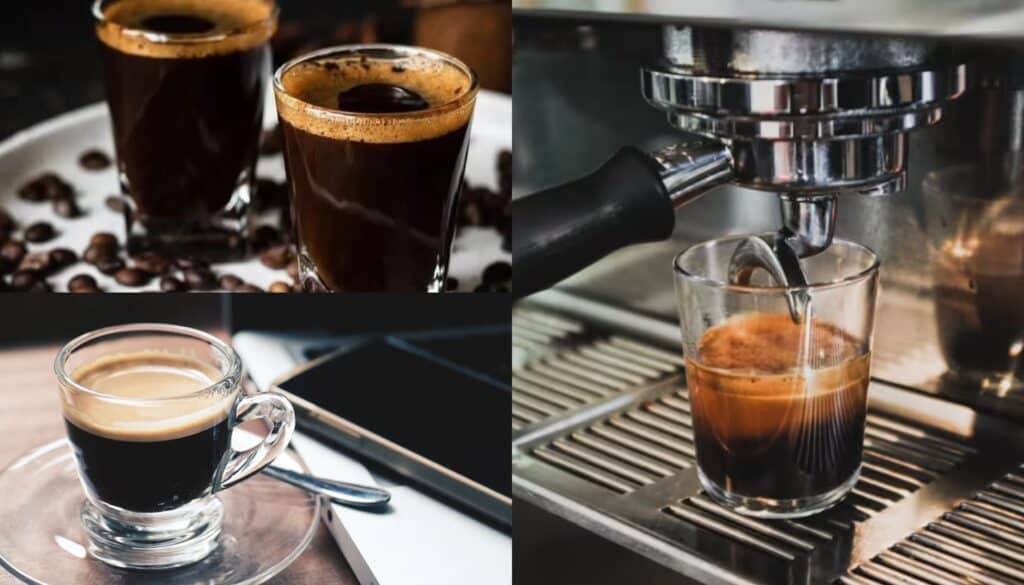
The Lungo, a sophisticated variant in the world of coffee, has carved out its niche not just among coffee connoisseurs but also within the broader tapestry of popular culture. Its integration into coffee trends, consumer preferences, and even its nods from celebrities and appearances in media underscore its unique appeal and growing popularity.
Lungo’s Place in Coffee Trends and Consumer Preferences
The global coffee scene is ever-evolving, with shifts towards specialty coffee and artisanal brewing methods becoming increasingly prominent. In this landscape, the Lungo holds a special place. Its preparation, lying somewhere between an espresso and an Americano, appeals to those who seek a deeper coffee experience without the intensity of a straight espresso or the dilution of an Americano. The Lungo caters to a refined palate, offering a balance that is perfect for savoring.
Consumer preferences have also shown a marked interest in exploring different coffee cultures and brewing techniques. The Lungo, with its roots deeply embedded in Italian coffee traditions, offers a taste of this heritage. It resonates with those looking to broaden their coffee horizons, blending tradition with the desire for a unique, elongated espresso experience.
The rise of home coffee brewing during recent years, partly fueled by global events that led to more time spent at home, has seen an uptick in the popularity of espresso machines and, by extension, Lungo. People are more willing to experiment with their coffee, and the Lungo provides a perfect canvas for this exploration.
Celebrity Endorsements and Appearances in Media
The Lungo has made its mark beyond the coffee industry, finding its way into the glamorous world of celebrity and media. While not as commonly spotlighted as other coffee drinks, its appearances and endorsements lend it a certain prestige:
- Celebrity Endorsements: Celebrities known for their sophisticated tastes and interest in coffee culture have occasionally mentioned their preference for Lungo, adding to its allure. Though specific endorsements fluctuate with trends, the association with figures known for their refined palates helps maintain the Lungo’s status as a discerning choice.
- Appearances in Media: From films to television shows that aim to capture the essence of modern living or the intricacies of daily routines, the Lungo sometimes appears as the coffee of choice for characters portrayed as sophisticated, worldly, or deeply passionate about their coffee. Its inclusion in such scenes underscores its reputation as a sophisticated beverage choice.
- Social Media and Influencers: With the rise of coffee culture on social media platforms, influencers who focus on lifestyle, food, and beverage often feature the Lungo. Through tutorials, taste tests, and coffee-related content, they highlight its preparation and enjoyment, further solidifying its place in contemporary coffee culture.
The Lungo’s journey through popular culture reflects its unique position at the intersection of tradition and modernity. It appeals to those looking for more than just a caffeine fix — it’s a choice for the aesthetically inclined, the culturally curious, and those who take their coffee with a side of history. As coffee culture continues to evolve, the Lungo remains a testament to the timeless appeal of well-crafted coffee, celebrated both in the quiet corners of cafés and the bustling world of popular media.
Conclusion
The Lungo, with its rich heritage and distinctive brewing method, occupies a special place in the vast landscape of coffee. This elongated espresso offers a unique balance between intensity and volume, providing a nuanced flavor profile that is both sophisticated and accessible. It stands as a testament to the art and science of coffee making, inviting aficionados and casual drinkers alike to explore the depths of coffee flavors beyond the traditional espresso or Americano.
The Uniqueness and Appeal of Lungo
The Lungo’s appeal lies in its versatility and the delicate balance it strikes. It caters to those who appreciate the bold flavors of espresso but desire a longer, more contemplative coffee experience. The Lungo’s preparation—requiring precise control over variables like grind size, water volume, and extraction time—highlights the craftsmanship involved in coffee brewing. Its ability to showcase different coffee beans’ flavor profiles without overwhelming the palate makes it a favorite among those who seek to savor their coffee.
Moreover, the Lungo has adapted to various cultural preferences and inspired a range of variations, demonstrating its flexibility and global appeal. From the Caffè Crema in Switzerland to its reimagined versions in specialty cafes worldwide, the Lungo continues to be a canvas for creativity and innovation in the coffee world.
Encouragement to Explore Lungo as Part of a Coffee Discovery Journey
For those embarking on or continuing their coffee discovery journey, the Lungo offers a rich avenue for exploration. Whether you’re refining your home brewing skills, sampling the offerings of local cafes, or diving into the history and culture of coffee, incorporating the Lungo into your repertoire can enhance your appreciation of coffee’s diversity and complexity.
Exploring Lungo variations, experimenting with different beans and grind sizes, or pairing it with various foods are all ways to deepen your understanding and enjoyment of coffee. Each Lungo sip invites reflection on the artistry and science that go into its creation, encouraging a deeper connection with the coffee itself and the broader coffee community.
In conclusion, the Lungo’s unique charm and adaptability make it more than just a coffee drink; it’s a celebration of coffee culture, inviting enthusiasts to savor, explore, and appreciate the rich tapestry of flavors and traditions that coffee has to offer. So, as you continue your journey through the world of coffee, let the Lungo be a reminder of the endless possibilities and pleasures that await in every cup.
Frequently Asked Questions about Lungo
1. What is a Lungo?
A Lungo is a type of coffee made by forcing a larger amount of hot water—typically double the volume used for an espresso—through finely-ground coffee beans using an espresso machine. This process results in a coffee that is less concentrated than an espresso but more intense and with a higher volume than an Americano. The word “Lungo” means “long” in Italian, reflecting the longer extraction time and larger quantity of the drink.
2. How does a Lungo differ from an Espresso and an Americano?
The primary difference between a Lungo and an Espresso lies in the water volume and extraction time; a Lungo uses more water and has a longer extraction time, leading to a larger and less intense drink. Compared to an Americano, which is made by adding hot water to an espresso shot, a Lungo’s extra water is passed through the coffee grounds during brewing, offering a different flavor profile that retains more of the espresso’s body and richness.
3. What kind of coffee beans should I use for a Lungo?
While you can use any coffee beans to make a Lungo, medium to dark roast beans are generally recommended. These roasts typically have a robust flavor profile that can withstand the longer extraction process without becoming overly bitter. Choosing beans with a taste profile that suits your preference—be it floral, fruity, nutty, or chocolatey—can also enhance your Lungo experience.
4. Can I make a Lungo with a regular coffee maker?
To make a true Lungo, an espresso machine is required because the process involves forcing hot water through tightly packed coffee grounds at high pressure. However, if you don’t have an espresso machine, you can approximate a Lungo by using a method that allows for a longer extraction time and more water, such as a French press or Aeropress, keeping in mind that the result may not have the same intensity or crema as a traditional Lungo.
5. Is drinking Lungo better for your health than other types of coffee?
The health implications of drinking Lungo versus other types of coffee primarily relate to caffeine content and individual sensitivity to caffeine. A Lungo generally contains more caffeine than an espresso due to the larger volume but less than a drip coffee because of its concentration. As with any coffee or caffeinated beverage, moderation is key, and it’s important to consider how caffeine affects you personally. Coffee, including Lungo, can offer health benefits like increased alertness and potential antioxidants, but individual health conditions or sensitivities should guide your coffee consumption choices.

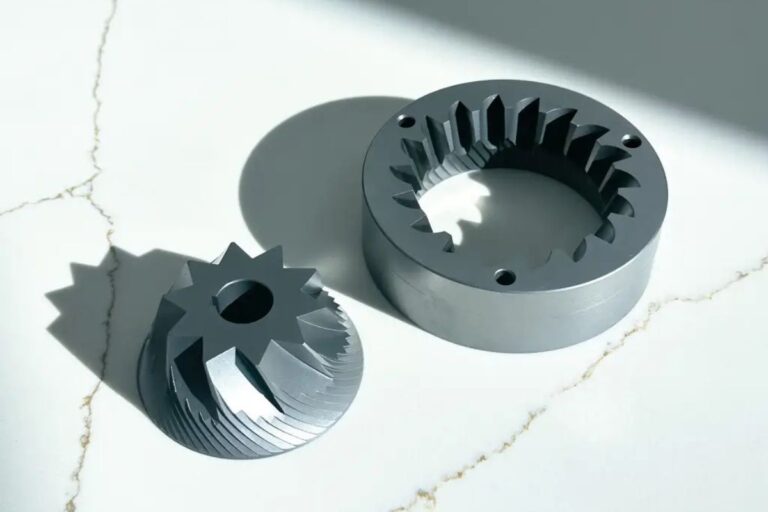
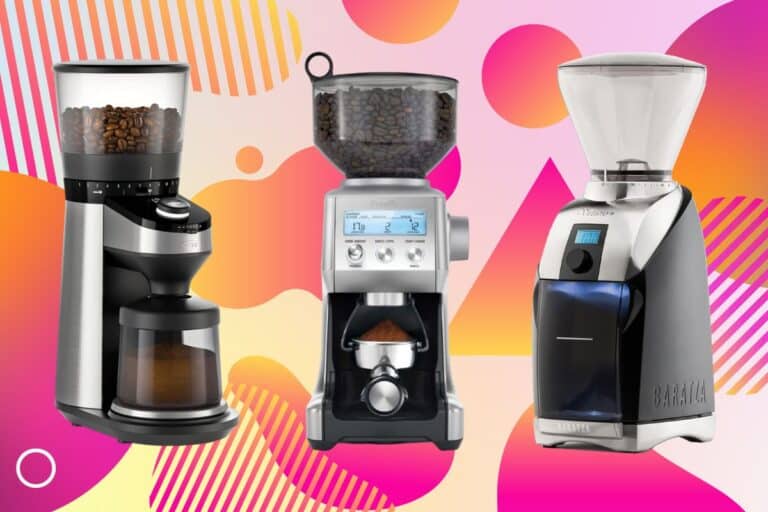
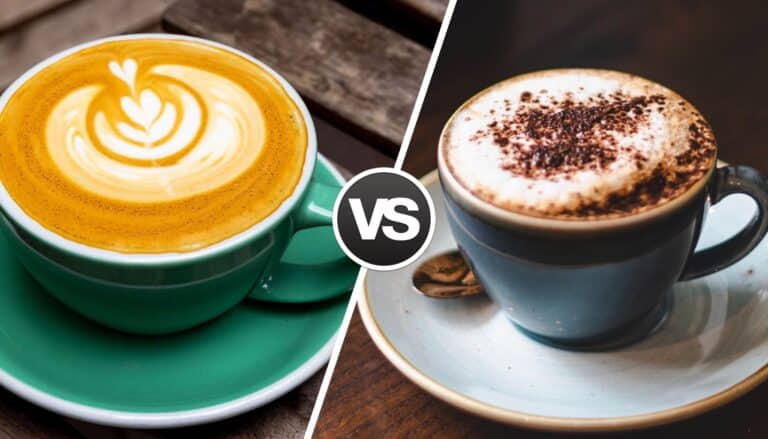

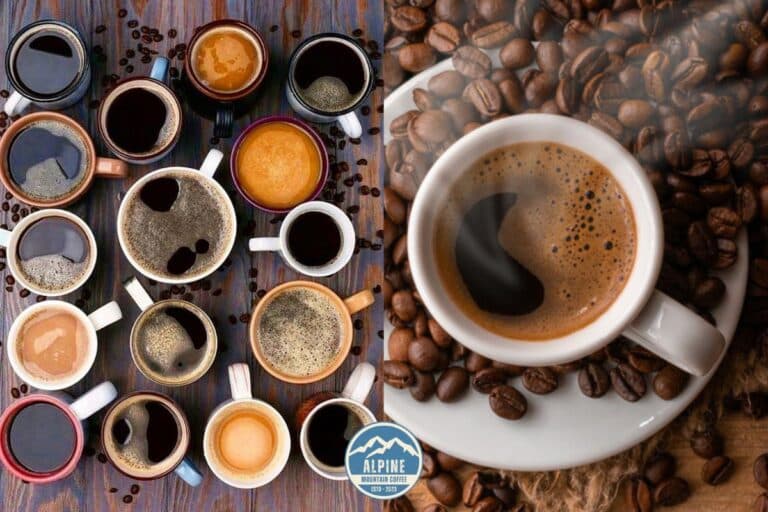

4 thoughts on “What is a Lungo?”
This article gives a clear and informative explanation of what a lungo is, making it easy for readers to understand how it differs from other espresso drinks. It’s a helpful resource for anyone looking to expand their coffee knowledge and try something new.
Excellent beat! The guide does a wonderful job breaking down what makes a lungo special, explaining its unique brewing process in an easy-to-follow way. Helpful tips on how to best enjoy a lungo make it perfect for both coffee newcomers and enthusiasts alike. It’s a warm, engaging read for anyone looking to expand their coffee knowledge and try something new.
This article does a great job explaining what sets a lungo apart from other espresso drinks, making it easy to understand its unique brewing process. It even includes helpful tips on how to enjoy a lungo, which is perfect for both beginners and coffee enthusiasts. The straightforward explanations make it an enjoyable read for anyone looking to learn more about coffee.
This article gives an excellent breakdown of what makes a lungo distinct from other espresso drinks, explaining the unique brewing process in a way that’s easy to understand. It provides helpful tips on how to best enjoy a lungo, which adds value for both newcomers and seasoned coffee lovers. The clear explanations make it a great resource for expanding anyone’s coffee knowledge.